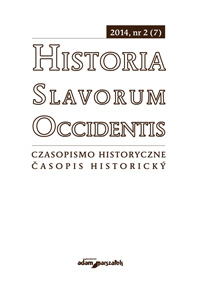Rękopis Digestum vetus ze zbiorów Biblioteki Kórnickiej PAN
Manuscript "Digestum vetus" from the collection of the Kórnik Library, Polish Academy of Sciences
Author(s): Wojciech Baran-KozłowskiContributor(s): Agnieszka Tokarczuk (Translator)
Subject(s): History, Diplomatic history, Ancient World, Middle Ages
Published by: Wydawnictwo Adam Marszałek
Keywords: Digestum vetus;Justinian;Roman law;medieval manuscripts;
Summary/Abstract: Currently in the collection of the Kórnik Library, the manuscript, produced by order of the Emperor Justinian, contains Digestum vetus with the later gloss of Accursius. It is considered one of the most interesting copies of this work in Europe, its rank determined mainly by the rich iconographic program consisting of 25 initials and over 230 illustrations in the margins, the majority of which are multiform scenes. Art historians studying the discussed manuscript indicate that among numerous manuscripts of the Diges-tum preserved in European collections, there is not another one with such a gorgeous illustrative programme.The miniature illustrations in initials, produced by a single master, open subsequent books of the Digests, referring specifically to the content of the first titles of given books. The remaining 238 marginal miniatures were made by three illustrators working in parallel on particular signatures to the manuscript. The analysis of their dispersion on each page has revealed that they were produced once the marginal gloss of Accursius was written down. In most cases the illustrations directly illustrate case studies contained inthe Digestum. These miniatures were designed so as to facilitate the perception of the text of the Digestum, help in memorising specific cases and to facilitate the search in the entire comprehensive codification. In light of recent findings of art historians, this manuscript was produced in several stages. First, the text of the Digestum was written, probably in northern Italy, in the last quarter of the twelfth century, then, in France in the 1230s the marginal gloss of Accarsius was added and illuminations prepared.This Code came to Poland in the fifteenth century, owing to the canon of Kraków and the scholastic of Płock Dersław of Karnice, who bought it during his studies in Italy in the years 1469–1471. The manuscript spent 300 years in the library of the Chapter of Płock, where he was purchased by Tadeusz Czacki to be located it in the Poryck Library. Then Digesta were bought by Adam Jerzy Czartoryski, and stored in the Library of Puławy, from where with a considerable part of manuscripts, it was ultimately transported to the Działyński Library in Kórnik, which has housed them to this day.
Journal: Historia Slavorum Occidentis
- Issue Year: 2014
- Issue No: 2
- Page Range: 39-62
- Page Count: 24
- Language: Polish

